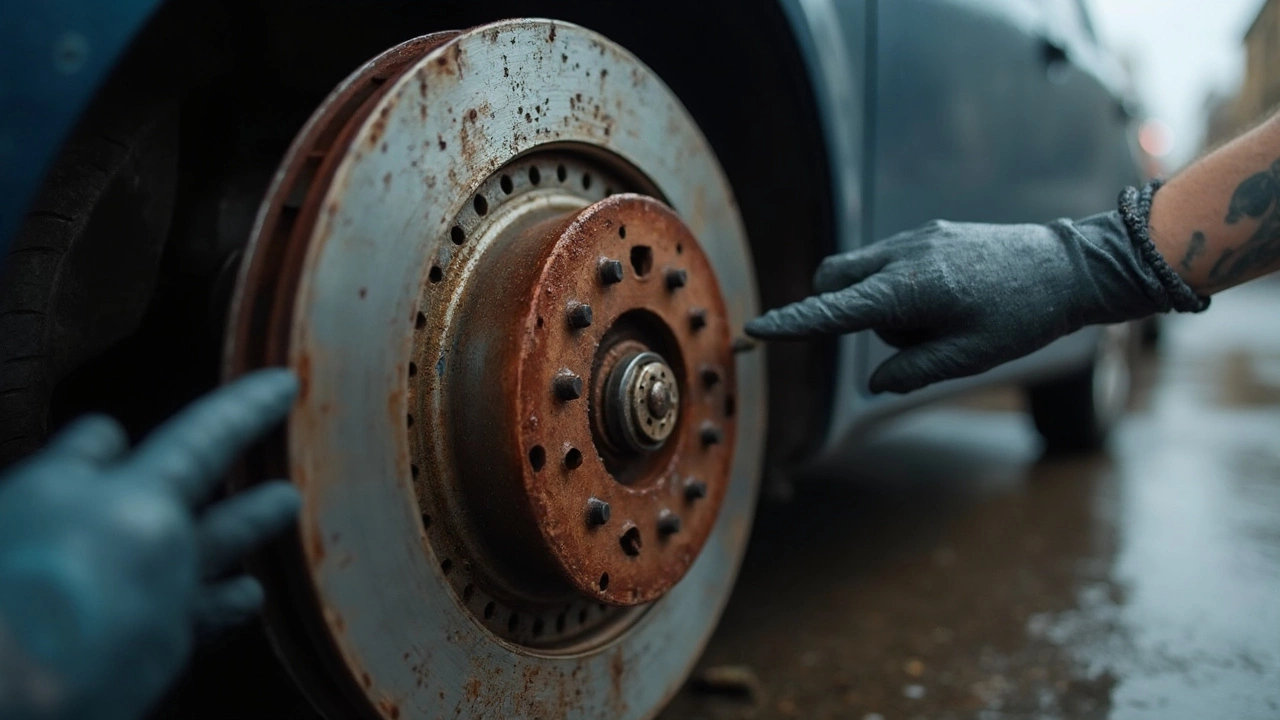Bad Rotors – Signs, Risks & What to Do
When working with Bad Rotors, rotors that are warped, cracked, or severely worn, reducing brake efficiency. Also known as warped rotors, they compromise the contact surface for the brake pads, leading to vibration, noise, and longer stopping distances. Brake Rotors, the steel discs that the brake pads clamp onto to slow the vehicle are the core component of any disc‑brake system, so any defect directly impacts safety. The wear on Brake Pads, friction material that presses against the rotors to create stopping power speeds up when the rotors are out of shape, because the pads can’t sit flat and get uneven heat. Often the solution involves Rotor Resurfacing, a machining process that removes a thin layer of metal to restore a smooth surface or a full replacement if the damage is beyond repair. In short, bad rotors trigger a chain reaction: reduced braking performance, accelerated pad wear, and higher repair costs if ignored.
Why Bad Rotors Matter
Imagine you’re braking hard on a wet road and the pedal feels spongy. That’s a classic sign that the rotors aren’t delivering consistent friction. The issue isn’t just a squeal; it’s a safety hazard. When rotors are out of round, the pads contact them unevenly, creating pulsating feedback through the pedal and steering wheel. This uneven contact also generates hotspots that can lead to brake fade, especially on downhill runs. Many drivers think a simple pad change will cure the problem, but if the rotors stay warped, the new pads will wear out quickly, forcing another visit to the garage. Deciding between resurfacing and replacement hinges on a few factors: thickness of the rotor, presence of cracks, and overall cost. Resurfacing can save you up to 50 % versus buying a new rotor, but it’s only viable if enough material remains—usually a minimum of 1.5 mm after machining. If the rotor is below that limit, or if it shows deep scoring, replacement is the safer bet. Knowing when to act keeps your brake system performing at peak and prevents the expensive cascade of part failures that follow a neglected rotor.
So, how do you confirm whether your rotors are bad? First, do a visual check: look for rust spots, deep grooves, or uneven wear after removing the wheel. Next, feel for a pulsating brake pedal or a high‑pitched squeal that doesn’t go away after a few stops. A simple run‑out test—spinning the wheel by hand—will reveal wobble; the rotor should turn smoothly without wobbling. If you spot any of these signs, it’s time to act. Replace the rotors if they’re below the minimum thickness, cracked, or severely warped. If they’re just a bit out of round, a professional resurfacing can restore flatness. Always pair new rotors with fresh brake pads; the two work together to deliver reliable stopping power. Below you’ll find a curated set of articles that walk you through clutch kit timing, brake pad lifespans, and cost‑effective rotor decisions, giving you the full picture to keep your brakes safe and your wallet happy.

Can You Drive a Car with Bad Rotors? Hard Truths About Worn Brakes
May 11 2025 / Brake PadsEver wondered if you can keep driving your car when the rotors are bad? This article breaks down what actually happens if you ignore worn rotors, why they matter, and what risks come with pushing your luck. You'll learn the real symptoms, hidden dangers, what repairs actually involve, and how long you can get away with it (spoiler: not long). If you're hearing squeaks or feeling shakes, don't wait until it's too late—we're giving you practical info to keep you, your wallet, and your car safe.
VIEW MORE